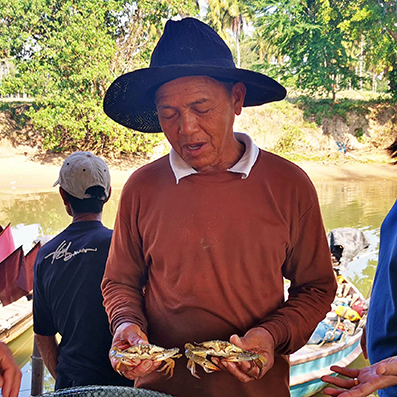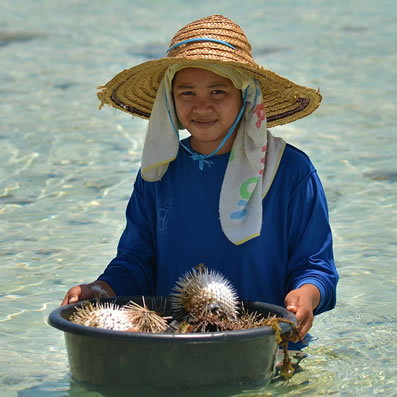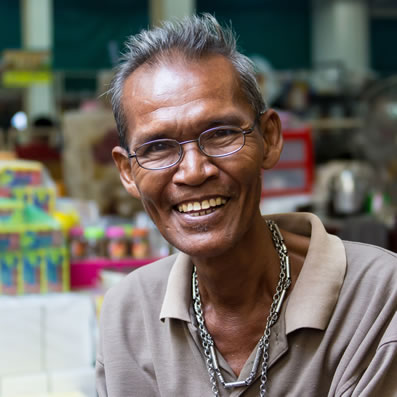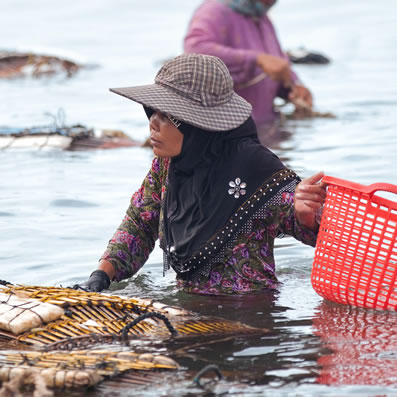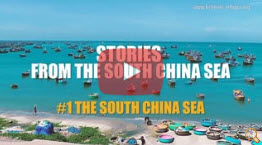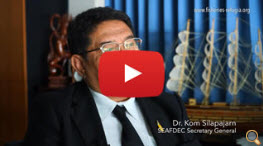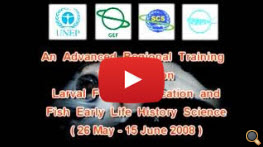THE SOUTH CHINA SEA FISHERIES REFUGIA INITIATIVE
FISHERIES REFUGIA PROJECT SITES
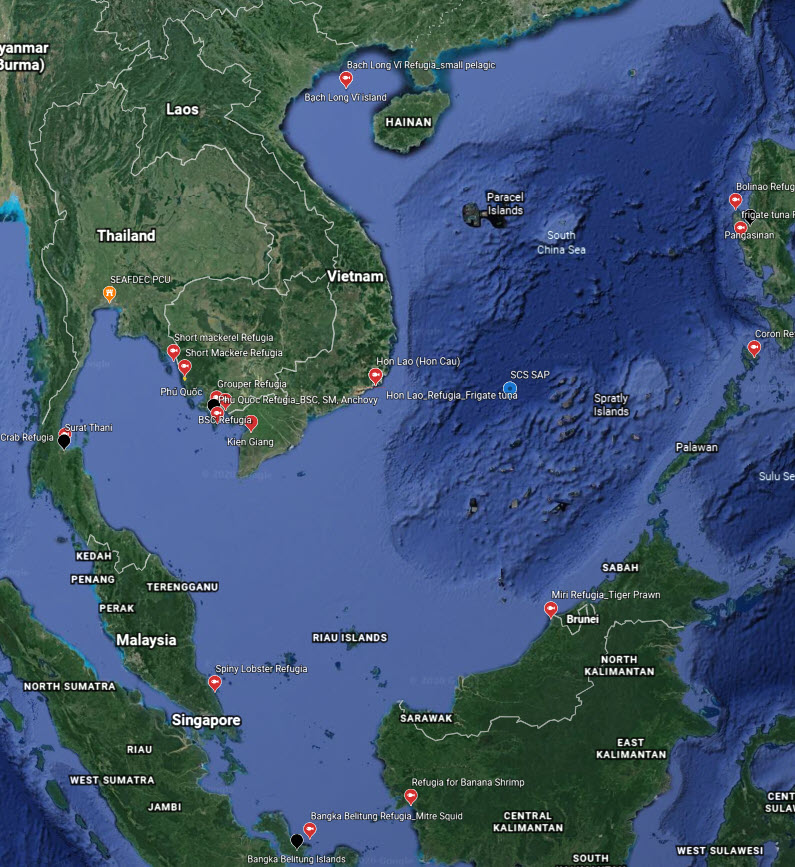 Click Here for
Click Here for More
Information
SCS SAP PRIORITY SITES (Habitat Linkages)
 All SCS SAP and
All SCS SAP and Fisheries Refugia
Priority Sites CHINA HABITAT
SITES CAMBODIA HABITAT
SITES INDONESIA HABITAT
SITES PHILIPPINES HABITAT
SITES THAILAND HABITAT
SITES VIET NAM HABITAT
SITES
Meet our Stakeholders
Social Media
Social Media
Best Practices of the Fisheries Refugia Project – Philippines
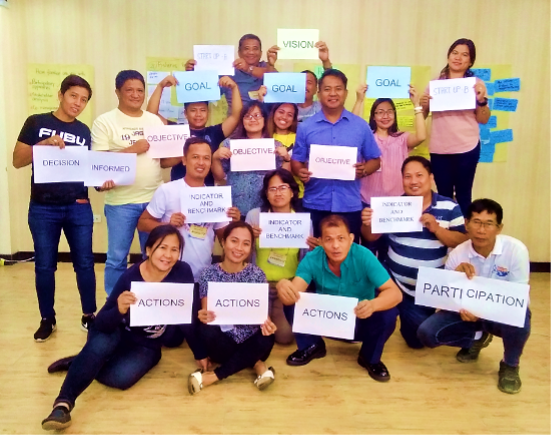
Photo: NFRDI, the Philippines
The South China Sea is a global center of shallow-water marine biological diversity, supporting a significant world fishery that is important to food security and as a source of export income for, Southeast Asian countries. Landings from this area contribute approximately 10 percent of reported global fisheries production per annum. In the Philippines, the SCS sub-region is among the most important fishing areas in the country as the volume of fish caught from this area of the archipelagoes is thought to contribute up to 20 percent of total annual fisheries production in the country, which employs roughly 5-6 million people.
The decadal rates of decline in a total area of critical habitats such as seagrass, coral reefs, and mangroves are currently estimated at 30%, 16%, and 16%, respectively. Fishing contributes to the loss and degradation of seagrass and coral reefs habitats. The national-level activities of this project in the Philippines will make a significant contribution to the enhancement of the scientific, institutional, and policy basis required to reduce the rates of loss of globally essential habitats and biodiversity due to fishing.
The focus of the refugia is to identify and designate priority areas where the integration of fisheries and habitat management can be applied. The fisheries refugia concept emphasizes the quality of the different habitats and their essential function in the life-cycle of the other fished species. Fisheries refugia address recruitment overfishing and growth overfishing and protecting the habitat. Thus, refugia's protection and management efforts are on the habitat and fish resources and not just to declare close fishing either temporally or spatially of a particular fishing grounds for other purposes.
Identifying priority fisheries refugia in the Philippines was done by reviewing the list of sites about the distribution and abundance of fish eggs and larvae based on studies and information conducted in the South China Sea and through workshop consultations. Through a series of stakeholder consultations, three priority sites were agreed to be included in the regional system of fisheries refugia. The final priority fisheries refugia sites selected for the Philippines are as follows:
- Bolinao, Pangasisnan
- Masinloc Zambales
- Coron, Palawan
STRENGTHENING COMMUNITY PARTNERSHIP AND COOPERATION
The success of the implementation of resources management involves various players from different institutions from fisheries, environment, academe, civil society organizations, and the local governments. As low levels of community support are identified to be among the big factor in the success of project implementation of the project, the site-based management committee and constant communication was ensured by the project to secure support and buy-in from officials
In the Philippines, the project invested time and effort to engage the local stakeholders, both from the local institutions up to the fishing community level. During the National Consultation workshop conducted last February 14, 2014, the working group decided to follow the Proposed Management Framework for the project from the national to the site level. One of the best arrangements made by the project was to secure cooperation from the Local Government Units (LGUs) to have a Letter of Agreement (LoA) with the National Agency.
1. Setting up of Fisheries Refugia Committees: Involving the key influential stakeholders
The Fisheries Refugia approach serves as a venue for local stakeholders to demonstrate an innovative approach to sustainable use and biodiversity conservation. At the onset of the project, key community influencers were identified and engaged. A Series of meetings were done to better understand the existing initiatives and mechanisms in the area and how the project can complement and collaborate with the existing players on the site.
For each identified fisheries refugia, a management committee– referred to as Site Committee, has been established. Each committee is composed of members from the local institutions that are engaged in the management of the refugia. These include representatives from local government units, academe, regional government agencies, law enforcers, fisherfolk organizations, non-governmental organizations, people's organizations. Considering their roles in carrying out the activities towards the attainment of the project outcomes, the project involved the Site Committee from the planning up to the implementation of the project to secure their support and commitment.
In the establishment of the committee, the project team devoted time to explain to the members the role and importance of each agency and staff in contributing to the success of the project. This enabled the members to understand the role of their involvement, making them more responsive and supportive of the initiative. A good example of the support from the Local Government Unit was the LoA with the national government agency. The said LoA will ensure that some local conservation and management activities to be implemented in the refugia site can be the basis of funding from the LGU budget, and other activities will be sourced from donors and other funding agencies and donor organizations.
It is worth noting that in all three refugia sites, the Site Committees were instrumental in engaging the local communities and have greatly helped in the mobilization and implementation of the activities through the following:
- Provision of guidance to facilitate the efficient implementation of the activities at the fisheries refugia; These include identification/ assigning a focal person to assist in the project activities.
- Propose and carry out resolutions to identify issues and bottlenecks in project implementation.
- Assist in the conduct of stakeholder consultation for the development of the management plan; and
- Provide guidance on how to tap the local stakeholders as a member of the different working groups of the proposed Fisheries Refugia Management Plan.
The following are the members of the Fisheries Refugia Site Management Committee:
- Local Government Unit (Chairman-Mayor/Vice Mayor, Fisheries and Aquaculture Committee, Municipal Agriculture Office-MAO, Environment, and Natural Resources Office-ENRO, Tourism Office)
- Academic Institutions
- Bureau of Fisheries and Aquatic Resources (BFAR)
- Community Environment and Natural Resources (CENRO)
- Philippine Coast Guard (PCG)
- Philippine National Police, Maritime (PNP Maritime)
- Fisheries and Aquatic Resources Management Council (FARMC)
- Association of Resort owners and Tourism Establishments
- Peoples Organization
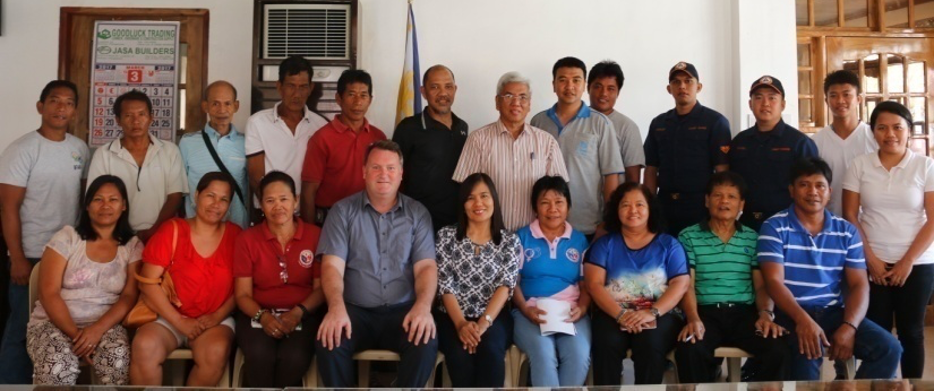
Bolinao Site Inception Workshop, March 2017

Masinloc Site Committee Meeting, May 2021
Since the project initiation, partnership building with the community was secured through regular meetings and close coordination with the site committee. These regular meetings paved the way for the updating of progress and resolution of issues encountered by the project.
While the pandemic has hindered the project team from visiting the sites to conduct face to face meetings, coordination with the different members of the site committee continued through consistent communication.
2. Engaging the Policy Makers
The refugia approach provides local administrations an opportunity to learn and demonstrate an innovative approach to sustainable use and biodiversity conservation. The importance of the policymakers in the project implementation and sustainability of the project at the local level, the legislators of the local government units were also engaged. Aside from the local chief executives, the project also ensured that local policymakers were informed about the project initiatives and their long-term goals. The project approached the key players in policy formulation in each of the municipalities, which include the Local Chief Executives and the Municipal Council formulating the ordinances of the town.
This is hoped to pave the way to faster approval of policy/legal instruments that are needed to facilitate the implementation of the project, such as the following legal instruments to support the project:
- Designation of the fisheries refugia boundaries
- Identification of priority species for refugia management
- Special order for the designation of volunteer teams
- Approval of the Fisheries Refugia Management Plan
Further support and buy-in from officials will be generated via national-level networking of local officials with scientific and technical initiatives and site-based management committee, as well as effective communication at the level of local leaders of the benefits and costs, including social aspects of refugia operation.
3. Encouraging more fisherfolk inputs through the conduct of separate stakeholder sessions
While the Site Committee Meetings provided a venue for local stakeholders to participate in decision-making related to the project, the project also worked towards ensuring that fisherfolks' inputs were captured.
Based on observations, fisherfolks do not actively participate in formal meetings and prefer to discuss in smaller sessions among their fellow fisherfolks. They are also observed to be more open when interviews are conducted in their communities/neighborhoods. In this regard, the project initiated several separate sessions with fisherfolks to encourage them to be more open in raising their issues and concerns. Meetings were also conducted in places that are proximate and familiar with fisherfolk participants. This paved for a more substantive information gathering as it took into consideration the outlook of the community who are more directly affected and benefited by the refugia sites.
During the information sessions, the project team explained the refugia initiative and the importance of managing the fisheries refugia in the sustainability of the resources and their livelihood. It also served as a venue to clarify with them the differences between the fisheries refugia and marine protected areas. These sessions served as a good platform to encourage the fisherfolks to share their views and ideas and have helped greatly in avoiding negative/wrong perceptions about the fisheries refugia initiative.
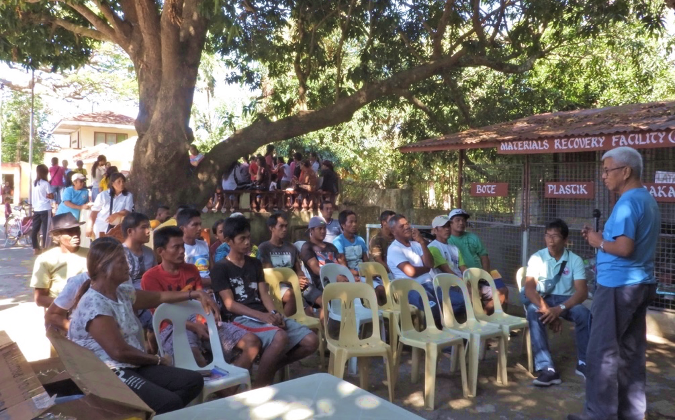
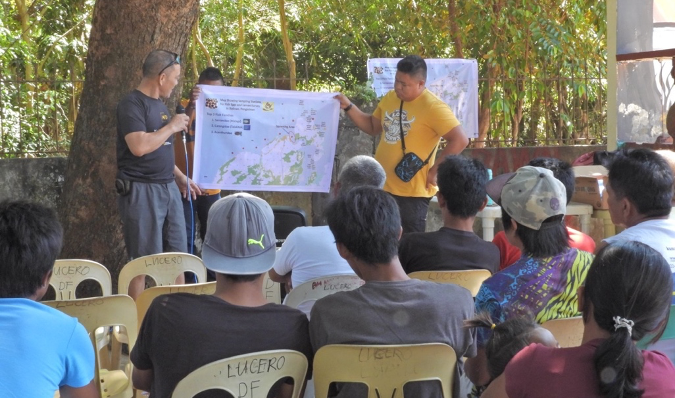
Information Drive for Coastal Barangays in Bolinao, Pangasinan
4. Facilitated the synergy between the environment and fisheries institutions
A very important action for the sustainability of the resources on the site is a coordinated approach to ensure that all aspects of fisheries refugia management are taken into consideration. The important integration of habitat and fisheries management should be the primary consideration in fisheries refugia. Without one of these, the fisheries refugia will not be a success. It should be emphasized that fisheries refugia management happens when both habitats and fisheries management are done at the same time. It is crucial that institutions handling the environment sector, the Department of Environment and Natural Resources (DENR), the fisheries sector, the Department of Agriculture/Bureau of Fisheries and Aquatic Resources (DA/BFAR), as well as the LGU counterparts, are one in a unified approach.
Given the limited integration of the work of fisheries and environment departments observed in the Philippines and other parts of Southeast Asia, the establishment and operation of fisheries refugia in the Philippines provide an opportunity to learn from a regional fishery sector-led initiative to collaborate with the environment sector in integrating fisheries and coastal habitat management.
The project served as a starting point for all related agencies, especially the DENR and DA/BFAR, to work together and pursue the management efforts with a unified approach. Meetings and dialogues among both agencies were facilitated by the project, which served as a starting point for coordination and collaboration. It can be noted that in the implementation of the project, the National Fisheries Research and Development Institute as the implementing partner, works closely not only with the Bureau of Fisheries and Aquatic Resources but also with environment institutions such as the Municipal Environment and Natural Resources Office, and Community Environments and Natural Resources (CENRO) as members of the Site Committee.
ESTABLISHMENT OF GOOD COMMUNICATION TO SECURE COMMUNITY SUPPORT
Awareness and involvement of the coastal communities in the fisheries refugia approach are crucial to the success of the initiative. The community, as the primary user of the fisheries and habitat, plays a key role in the conservation and management of the habitat and the fishing grounds. They should be informed of the importance of the fisheries refugia with regards to the economic benefits and risks when it is not properly sustained.
Based on the communication plan derived from the project's stakeholders' analysis, the project approached different levels of stakeholders accordingly. Among the stakeholders which whom the project has noteworthy engagement are the local government unit and the fishing community.
- Communicating the Research Results to the Local Stakeholders
Sustainable fisheries remain to be a key priority for all coastal communities in the country. Among the areas the project pursued is to better understand the resources of the fisheries refugia through the conduct of research, which offers the stakeholders a science-based tool on how to better manage their resources.

Presentation of initial research results to the project stakeholders of Masinloc
During site committee meetings, the project took time to update the community and present to them the results of the research. This was highly appreciated by the community as the research made them better understand the status of their resources, which was effective in securing their support for the initiative. The results of the research also supported the need of the stakeholders to sustain their resources to ensure the income and food security of the community.
- Information Awareness for the Community
Awareness and involvement of the fishing community are crucial to the success and sustainability of the fisheries refugia. Communicating to them the purpose of the project and its benefits in terms of livelihood in the long term has been beneficial.
Recognizing that the implementation of refugia management will likely affect the access of the fisherfolks to the refugia sites, the project team invested time to create awareness among the fishing community about the refugia. Several information sessions and dialogues have been conducted to establish a mutual understanding of what is the refugia initiative and how the community will benefit from its management.
During the dialogues, the fishing community was made aware of the purpose of the refugia and what they could do to support the project. After several information sessions, the community was able to better understand the complexity (spatial, temporal scope) of the fisheries refugia and how it differs from marine protected areas. It also served as a platform to discuss and have a shared understanding of the issues in the refugia and how the community can affect the status of the resources in the sites. It also provided a venue to discuss with the community the importance of habitats such as coral reef, seagrass, mangrove, and wetland habitats in the productivity of fisheries and act as refuge sites for fish species during critical phases of their life cycles.

Consultations with the fishing community of Masinloc
It can be noted that upon learning that refugia will only relate to specific areas of significance to the life cycle of particular species, the community was more accepting of their concerns and perception about being restricted to catching fish and that they will have a smaller fishing ground has been clarified. In addition, the fishing community was supportive, knowing that the longterm objective of the refugia management is in line with their livelihood sustainability for the long-term. Aside from community dialogues, information, education, and communication materials were also prepared and used for information, displays, and public meetings.
ESSENTIAL ECOSYSTEM APPROACH TO FISHERIES MANAGEMENT (EAFM) TRAINING
In support of the fisheries refugia management, the Essential Ecosystems Approach to Fisheries Management Training was also provided by the project to the stakeholders to increase their capacities and appreciation to ensuring the balance of the ecological and human well-being of each site within an improved governance framework.

Coron EAFM training participants, training instructor, and guests November 2019
The 5-day training was much appreciated by the participants as it enhanced their understanding of the ecosystem approaches but also empowered them to develop a grounded fishery management plan that is participated in by a wide range of stakeholders, which also included participants from the law enforcement, education and social welfare sector among others. The training served as an initial planning session for the formulation of the fisheries management plan, and its outputs were discussed and later deliberated by the Site Committee.
Lastly, the activity also served as a venue for building camaraderie among the local stakeholders. The interactive sessions were enjoyable to the participants, who were able to socialize and familiarize themselves with participants from other agencies whom they do not usually coordinate with Personal contact among the local players is viewed to be beneficial for the smooth implementation and sustainability of the project, as partnerships have been forged among key stakeholders.
